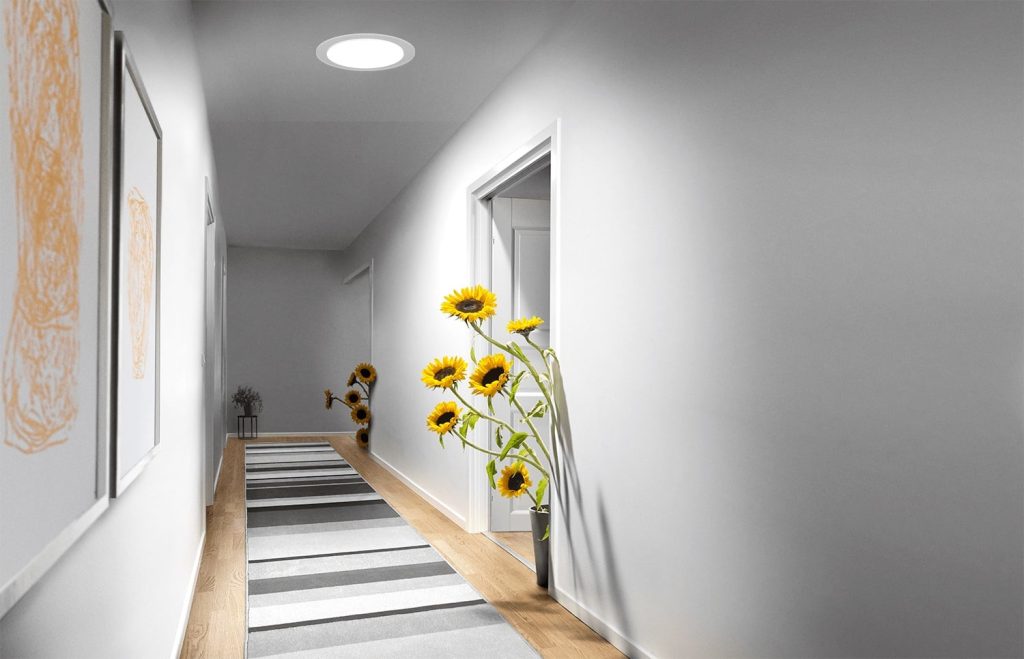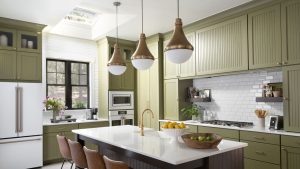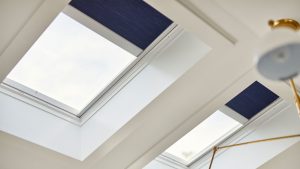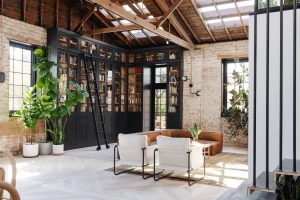
Tubular! Besides being a fun surfer catchphrase, tubular skylights are an up-and-coming, popular way to bring natural light to rooms at the center of your home. Often called tunnel skylights, these units capture daylight hitting your roof and beam it down a highly reflective tube to the space below.
What makes these skylights so versatile compared to traditional windows and other skylights is that they are designed to fit between the rafters in your ceiling, sending light from your roof to the room below uninhibited. While vertical windows are limited to the outside walls of your home and traditional skylights can be limited due to space, tubular skylights can fit just about anywhere. This means you can get the most daylight possible throughout your home.
A tunnel skylight comes in three separate pieces:
- The Roof: Low-Profile Appearance
The exterior part of your sun tunnel sits on your roof, collecting the most light possible to send down the reflective tunnel. There are a variety of exterior options to choose from depending on positioning and the direction the sun travels over the unit.
- Domes: Some units are fixed with a clear UV resistant dome, typically with a slightly raised, pitched look to provide the most optimal angles for collecting sunlight. These units are beneficial in northern exposures, where there is less direct light.
- Flat Glass: Glass tunnel exteriors closely resemble traditional skylights. They are more integrated with the roofline and do not have a raised profile or dome. These units work well in developments where local ordinances (HOAs) do not allow acrylic domes.
2. Tunnel Design
The tunnel or the tube (the part that goes between your roof and ceiling) is made up of highly reflective material, helping the most light travel to the space below. A tunnel can come in either a flexible or rigid design, which mostly depends on the run path between your roof and ceiling. If you have no obstructions in your attic, the most popular option your installer will choose is a rigid tunnel. Flexible tunnels, however, can fit around or over obstacles allowing you to still benefit from daylight even if there’s not a direct path between your roof and ceiling.
3. Ceiling Ring, Diffusers, and Night Lights
With such bright light streaming down the highly reflective tunnel, you need a good ceiling ring and diffuser to help disperse the light into the space. Plus, as the only part of the tubular skylight you can see in the interior of your home, you’ll want options to match your style and design. Some brands offer different diffuser upgrades (wavy lines, bubbles, and prism designs) and they are easy to swap out at any time to change up the room and the light.
If you’re worried about lighting your space after the sun goes down, tunnel skylights that have a rigid tunnel design can be compatible with night lights that turn on automatically at night. Most brands offer these with solar capabilities, meaning the night light is charged by the sun so you don’t have to worry about replacing batteries.
Tubular skylights – sun tunnels – are one of the most versatile products to install in your home to bring in more natural light to those interior rooms. And another plus to add to the tunnel skylight’s column is that it can be installed (in basic installation applications) in less than a single afternoon.





